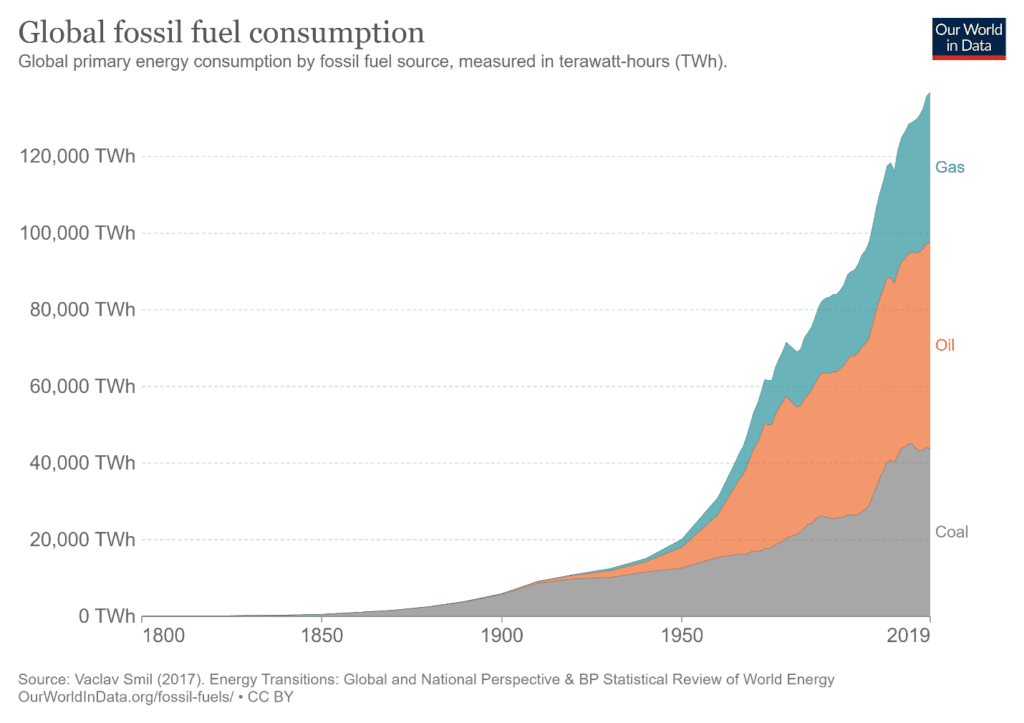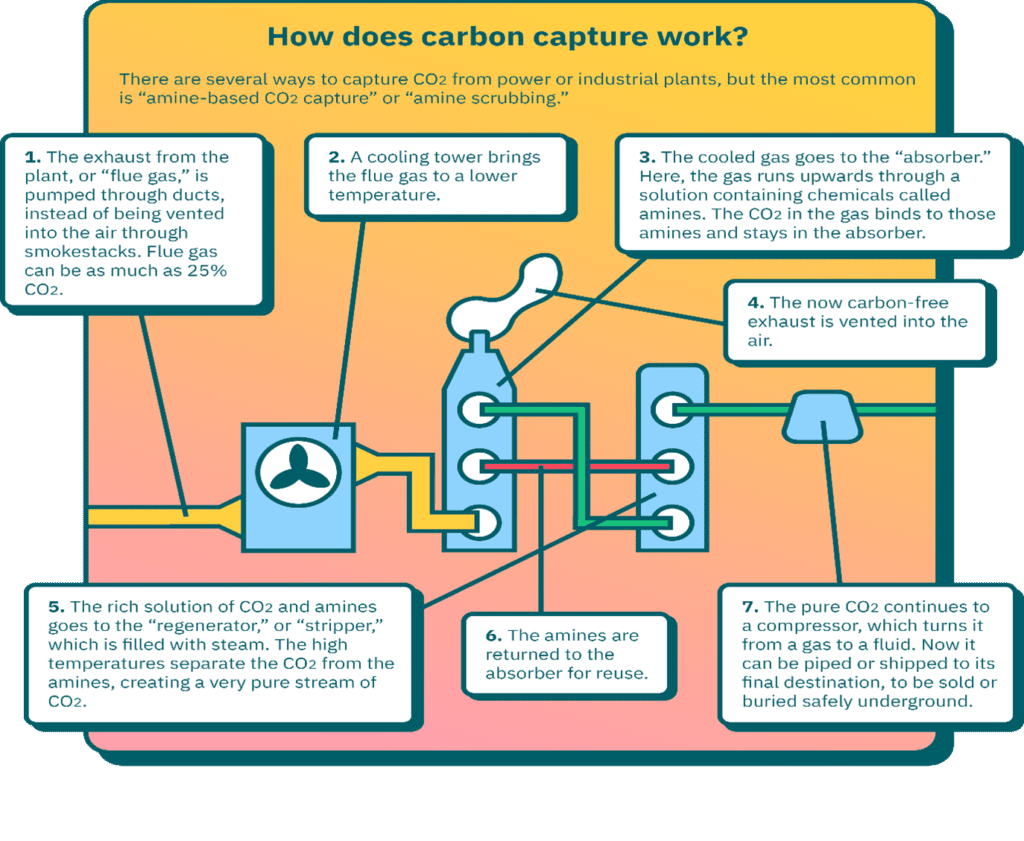Can Carbon Capture slow climate change?
A recent report from the United Nations described the impact of unhampered greenhouse-gas emissions from human activity over the centuries. The report, based on a three-year analysis of 14,000 peer-reviewed scientific studies, states that “global surface temperature will continue to increase … unless deep reductions in carbon dioxide (CO2) and other greenhouse gas emissions occur in the coming decades.” While some may point to polar ice core samples as demonstration that the Earth’s temperature has fluctuated significantly over the eons, it is hard to refute the world’s dramatic increase in fossil fuel consumption, especially since the modern industrialization generated by World War II.

The U.N. report directly connects the increase in extreme global weather events – floods, wildfires, heat waves – to climate change. And similar to the pace of global fossil fuel consumption, the Earth’s temperature rise will also be exponential.
The Intergovernmental Panel on Climate Change (the U.N. body that compiled the report) has stated that emissions must be cut to net-zero by 2050 to stem this hazardous warming trend. While there are a number of fossil fuel alternatives – solar, wind, hydro and nuclear – they all face efficiency, cost or political headwinds to supply the world’s continuously growing energy needs. However, there currently exists an available method to halt the increase of greenhouse gases into our atmosphere: carbon capture.
Carbon capture utilizes a process that extracts carbon dioxide (CO2), primarily from heavy industry byproducts, before it enters the atmosphere and then transports the separated component to an underground geological storage site. The goal of carbon capture is to neutralize the emissions of CO2 released into the air, leading to the eventual reduction of the existing amount in our atmosphere. There are three leading types of carbon capture methods:
DAC, as the name implies, directly extracts CO2 out of the air through a chemical process. This is the optimal carbon capture method as it removes existing carbon dioxide from the atmosphere. As long as the DAC plant is powered by a non-fossil fuel source, the result will be negative emissions. Unfortunately, as the concentration of CO2 in the air is roughly 300 times less than in the smokestacks of industrial plants, the current technologies are extremely inefficient and costly.
CCS removes the CO2 from the emissions generated by the burning of fossil fuels at an industrial plant before it is released into the atmosphere. The carbon dioxide is extracted chemically at the smokestack and then compressed into liquid form. The liquid CO2 is then transported through a pipeline to deep underground wells like dried up oil and gas reservoirs.

This process does not reduce the existing CO2 in the air as DAC does, but it does produce a closed loop with net-zero emissions. Currently, over 30 million tons of CO2 are being stored, which is approximately the emissions of 6.5 million cars. (For reference, in 2020 there were close to 287 million cars in the U.S. alone) There is obviously a shortage of storage capacity. However, CCS also presents some problems: need for a vast pipeline network to transport liquified CO2; the requirement to source used up oil and gas reservoirs; and the capital costs to compress the carbon dioxide.
CCU takes the extracted CO2 and utilizes it predominantly to produce fuel. In enhanced oil recovery (EOR), the liquified CO2 extraction is injected into active oil reservoirs in order to recover more oil. There are other potential uses for CO2 such as cement, synthetic and biofuels, carbon fibers, graphene and fertilizers. Unfortunately, feasible commercialization for these products are years away.
Similar to CCS, the process results in a net-zero emissions as the CO2 utilized to produce the fossil fuel is removed before it hits the atmosphere. However, the most important characteristics of CCU versus other carbon capture methods is its current usage and near-term potential. As CO2 injection makes up roughly 65% of the total EOR market value ($15.8 billion in 2019 and estimated to be over $20 billion by 2025) and is already profitable, CCU is the near-term first step towards a possible net-zero emissions by 2050.

As fossil fuel alternatives can not yet reliably produce enough to meet the world’s needs, oil will continue to provide the main source of energy for at least the next decade. The reality is that any chance to achieve net-zero emissions must begin with EOR. And the leading enhanced oil recovery companies are the major oil producers.
The large oil companies – Exxon Mobil (XOM), Chevron (CVX), BP (BP) and Royal Dutch Shell (RDS.A) – already possess the CO2 EOR technology and have implemented the process to extract more oil without increasing greenhouse gas emissions. These companies are viable carbon capture stock investments.
However, in order to increase the scale to a majority of their wells, these producers will need an influx of capital. University of Houston chief energy officer Ramanan Krishnamoorti believes companies like XOM could achieve net-zero emissions over the next thirty years without exiting oil and gas production if they implement large scale CCU projects. However, these ventures’ commercial viability would be reliant upon government subsidies not yet in place. And that is where the government policymakers are backed into a corner.
The government wants net-zero greenhouse gas emissions by 2050. The government needs to maintain the country’s supply of energy without major power disruptions or skyrocketing cost.
As solar energy, wind and nuclear energy do not have the capacity to fulfill our energy needs, oil and gas are necessary to maintain our economic productivity and sustain our society. Basically, the government needs the big oil companies to continue to produce energy while striving to achieve net-zero emissions until the costs, efficiencies and political headwinds of the alternate energies, like hydrogen energy are viable.
EOR is the best first-step for the imperative reduction of CO2 in our atmosphere. And expect the government to provide funding – through the various green initiatives in the upcoming infrastructure bill – to transform the vilified big oil companies into green partners. With their stocks well off historical highs and offering attractive dividend yields, investors should be looking at the major oil producers as potential green investments subsidized by governments around the world.
In Summary
There is little argument that the overall trend in energy production is toward sustainable non-fossil fuel sources in order to reduce the greenhouse gases in the atmosphere. While the world waits for the alternative production methods to catch up with oil and gas regarding reliability, availability and cost-effectiveness, the ability of enhanced oil recovery utilizing CO2 from carbon capture provides the best start towards net-zero emissions. And the big oil companies will be the largest benefactors of the massive green subsidies governments will distribute to achieve their goal by 2050.